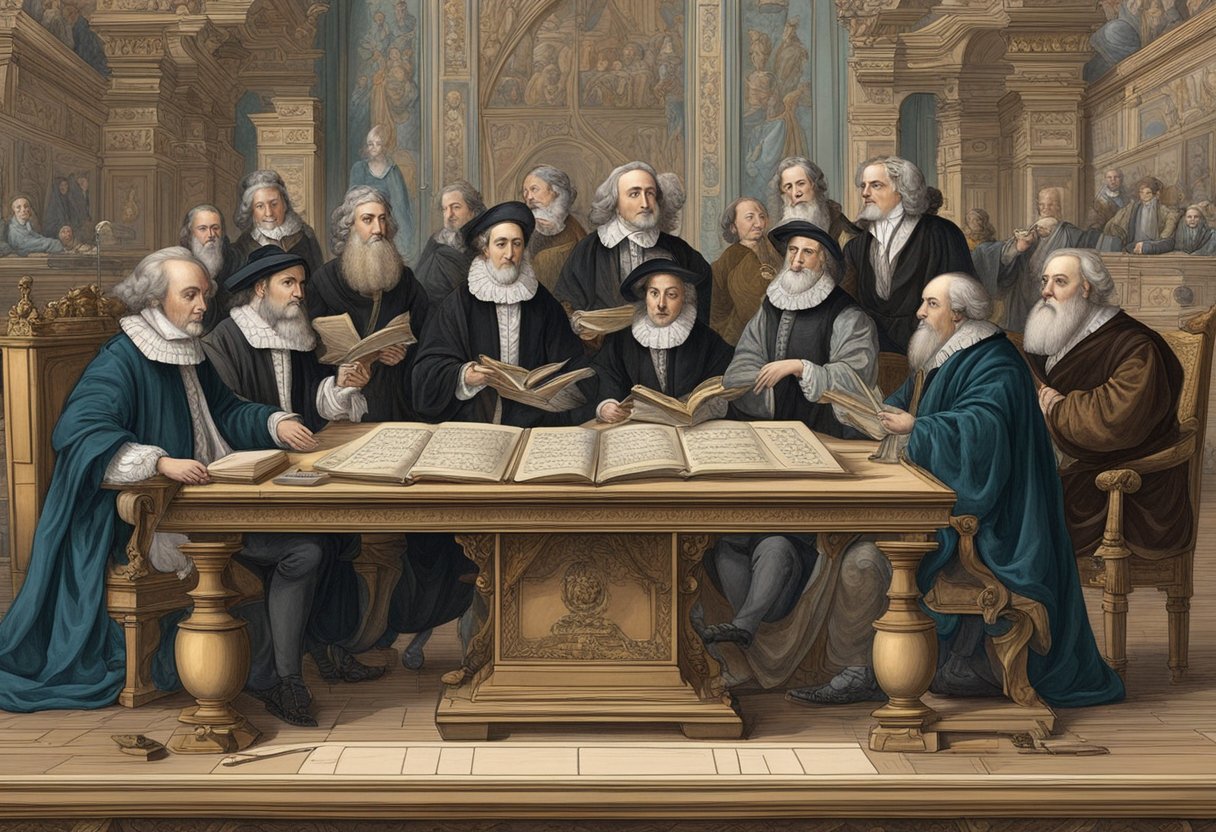Within the encompassing realm of poetry lies the sonnet, a potent and enduring form that has voiced the introspections and passions of poets for centuries.
A sonnet, traditionally a poem of 14 lines with a strict rhyme scheme, has been a vessel for expressions ranging from the depths of love to the complexities of philosophical thought.
The intricacy of its structure and the precision required in its creation have established the sonnet as a favourite amongst both writers and readers of poetry.
Related: For more, check out our article on How To Teach Sonnet Poetry here.

Tracing its lineage back to the Italian Renaissance, the sonnet has evolved through different cultures and epochs, each bringing a unique flavour and modification to the form.
While the Italian or Petrarchan sonnet laid the foundation, the Elizabethan era saw the rise of the Shakespearean sonnet, with its own distinctive pattern and thematic diversity.
Sonnets have showcased the agility of the English language and the capacity of its lexicon to adapt to this regimented poetic style, proving its versatility across time.
Key Takeaways
- The sonnet remains a vibrant part of literary tradition, offering rich exploration of personal and universal themes.
- Its evolution demonstrates adaptability, reflecting changes in language, culture, and poetic expression.
- Sonnets serve as a testament to the skill of their creators, highlighting the poetic mastery required for their composition.
Related: For more, check out our article on Examples of Free Verse Poetry here.
Origins and Evolution of Sonnets
The sonnet, a revered poetic form, emerged in 13th-century Italy and was perfected during the Renaissance. It later crossed into England where it took on new forms and became fundamental to English literature.
Italian Roots and Petrarchan Form
Giacomo da Lentini, an Italian poet, is credited with the invention of the sonnet in the 13th century. He introduced a structured 14-line form, with thematic emphasis on romantic love.
The form burgeoned under the mastery of Francesco Petrarch, whose “Petrarchan sonnets” became the standard with an octave and a sestet, typically employing an ABBAABBA rhyme scheme for the octave and variable schemes for the sestet.
Petrarch’s contributions immensely influenced poets throughout Europe, and his themes of courtly love were widely emulated.
The structure and thematic elements of the sonnet would heavily inform later variations as it made its way across the Renaissance landscape of Europe.
The English Sonnet and its Variations
When the sonnet journeyed to England in the 16th century, poets like Thomas Wyatt and Henry Howard, Earl of Surrey, adapted the form, leading to the birth of the “English sonnet” or the “Shakespearean sonnet”.
This variant favours a different rhyme scheme: ABAB CDCD EFEF GG. Both Wyatt and Surrey are responsible for introducing this structure, which was later popularised by William Shakespeare.
Shakespeare, the most notable exponent of the English sonnet, added his personal touch, deepening the thematic complexity and exploring a broader range of emotions.
In conjunction with these variations, other forms such as the “Spenserian sonnet”, introduced by Sir Philip Sidney and further developed by Edmund Spenser, flaunted a linked rhyme scheme of ABAB BCBC CDCD EE.
These adaptations not only signify the evolution of the sonnet within English literature but also underscore the form’s versatility and enduring appeal from its Italian inception to its Elizabethan zenith.
Related: For more, check out our article on Examples of Haiku Poetry here.
Structural Elements of Sonnets
Sonnets are distinguished by their specific structure that includes 14 lines, a meticulous rhyme scheme, and a consistent meter. These elements work in concert to create a rhythmic and thematic unity within each poem.
Rhythm and Meter
Iambic pentameter is the most common meter in sonnet poetry. This means each line typically consists of ten syllables, with the stress falling on every second syllable, creating a pattern of an unstressed syllable followed by a stressed one (da-DUM).
A single unit of this pattern is known as an iamb, and a line typically contains five of these feet.
Rhyme Schemes and Turn
The traditional rhyme scheme of a sonnet is crafted through its quatrains (groups of four lines) and a final couplet (two lines).
Different sonnet forms may adopt specific rhyme schemes, such as abab cdcd efef gg for the Shakespearean sonnet or abbaabba cdc(d)cd or abbaabba cde(c)de for the Petrarchan sonnet.
A sonnet often features a volta, or turn, a shift in the poem’s subject or perspective, typically occurring at the start of the sestet, sometimes noted in the change of rhyme scheme from octave to sestet.
The quatrains generally build up an argument or theme, which is then resolved or countered in the final couplet or through the transition from one part of the rhyme scheme to another, for example, moving from cdcdcd to cdedce.
Related: For more, check out our article on Examples of Limerick Poetry here.
Themes and Subjects in Sonnet Poetry

Sonnets have historically explored profound human emotions and experiences, utilising a range of themes that reflect the complexities of life, love, and nature.
Classical and Human Aspects
In the domain of sonnets, the theme of love is perhaps the most pivotal, with poets often transcribing the deepest affections and emotional intricacies that accompany human relationships.
Famous for its exploration of love is Shakespeare’s Sonnets, where the English bard muses on the multifaceted nature of love, from its purity to its more tormenting aspects.
Additionally, family dynamics and the ties that bind individuals often surface, speaking to loyalty and kinship. These works can immortalise the poets’ loved ones or articulate the sorrows and joys inherent in familial bonds.
Addressing art and music, sonnets commonly reflect on their transcendent qualities that echo through time.
The moon often features as a symbol in these poetic pieces, usually representing the enigmatic and inspirational aspects of artistic creation.
Discussions of time itself are also prominent. The inexorable march of time, with its capacity to erode and change everything in its path, brings a sense of urgency and poignancy to a sonnet’s lines.
Nature and Existential Reflections
The observation of nature, spanning from the rebirth in spring to the dormancy of winter, provides an extensive backdrop against which poets contemplate life and existence.
Sonnets may depict a landscape transforming with the seasons or use natural phenomena as metaphors to describe the human condition. The moon, again, surfaces here, casting a gentle ambiance that sonneteers often employ to discuss contemplation and change.
Beyond the pastoral, sonnets grapple with themes as final as death and as devastating as war. Whether addressing the personal fear of mortality or the collective loss from conflict, these poems delve into the sombre realities of human life with a sense of existential reflection.
Within this sphere, they may also examine the transience of glory and the natural world, questioning the permanence of achievements and beauty.
Related: For more, check out our article on How To Teach Haiku Poetry here.
Notable Sonneteers and Their Contributions

The sonnet, a formidable poetic form, has been mastered by a diverse assembly of poets, each leaving a distinct imprint on the genre.
Key figures have crafted lines that resonate across centuries, shaping the literary landscape with their intellectual and emotional depth.
Shakespeare and His Musings
William Shakespeare is synonymous with the Shakespearean sonnet form, which pivots around the thematic quatrains followed by a couplet. His cycle of 154 sonnets explores a range of human emotions, often addressing a mysterious ‘Fair Youth’ and a provocative ‘Dark Lady’.
“My mistress’ eyes are nothing like the sun” remains a notable example, showcasing his prowess at subverting conventional blazons in love poetry.
- Notable works:
- Sonnet 18 (“Shall I compare thee to a summer’s day?”)
- Sonnet 116 (“Let me not to the marriage of true minds”)
- Sonnet 130 (“My mistress’ eyes are nothing like the sun”)
Beyond Shakespeare: Other Influential Poets
Petrarchan sonnet, named after the Italian poet Petrarch, is characterised by an octave and sestet structure, often embodying unattainable love.
The beloved ‘Laura’, a recurrent figure in Petrarch’s sonnets, epitomises this idealised passion.
- Edmund Spenser’s unique ‘Spenserian’ variant weaved intricate rhyme schemes as seen in “Astrophil and Stella”.
- The radical Elizabeth Barrett Browning brought a Victorian sensibility to the form, while Sir Thomas Wyatt and Lady Mary Wroth are credited with introducing and adapting the sonnet to English vernacular.
- John Donne’s metaphysical approach injected intricate arguments and sharp wit into his work.
Pioneers in the thematic and structural evolution of the sonnet included:
- John Milton, known for penning “On His Blindness,” expanded the thematic scope to include personal loss and existential reflections.
- William Wordsworth and John Keats embraced both nature and personal introspection, with the latter offering works like “On First Looking into Chapman’s Homer.”
- George Meredith’s “Modern Love” and Edna St. Vincent Millay’s early 20th-century contributions rejuvenated the sonnet with modern sensibilities, questioning love and gender norms.
The sonnet, with its strict constraints, has been a canvas for literary greats to etch their most profound thoughts and emotions.
These poets laid foundational stones upon which the enduring edifice of sonnetry stands, a testament to the form’s capacity to capture the complexity of human contemplation.
Writing Your Own Sonnet
Crafting a sonnet requires a blend of structure and creativity. To write one’s own sonnet, they must be conversant with its format and draw inspiration to fill its framework with vivid language and emotion.
Understanding Sonnet Structure
A sonnet traditionally consists of 14 lines divided into a specific rhyme scheme and meter. Sonnets typically adhere to iambic pentameter, a rhythmic pattern of an unstressed syllable followed by a stressed one, ten syllables per line.
The structure can be split mainly into two types: the Italian/Petrarchan and the English/Shakespearean. The former is arranged as an octave and a sestet, and the latter is organized into three quatrains followed by a final couplet.
Key elements of a sonnet structure include:
- Octave: Introduces the theme or problem.
- Sestet: Provides a resolution or counterpoint.
- Quatrain: Develops a specific aspect of the theme.
- Couplet: Offers a summary or a twist, known as the ‘turn‘.
Finding Inspiration and Crafting Verses
One must seek a source of inspiration that stirs a profound feeling or mood. This could be anything from the personal experience of attending school to observing the simple beauty of flowers in a garden.
The temperament of the sonnet, or its tempo, is crucial—it should capture the essence of the emotion and then carry it across the poem.
To craft verses effectively:
- Select a central idea as your subject matter.
- Determine the mood—whether reflective, melancholic, joyous, or another emotion.
- Use vivid imagery and concrete details to express your theme.
- Create a volta or ‘turn’, usually after the eighth or twelfth line, to introduce a shift in perspective.
By intertwining classical structure with fresh insight, one can pen sonnet examples that endure as personal testaments of their artistic expression.

